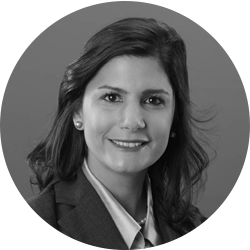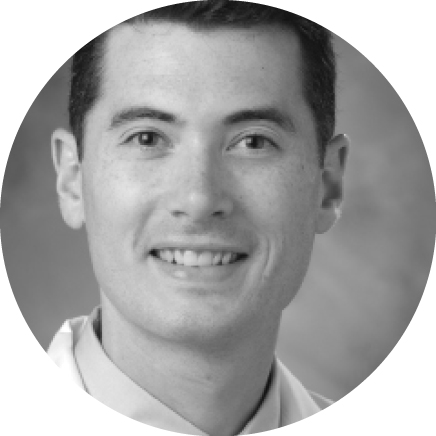
Brandon Rodriguez, MD
As the baby boomers (the generation of Americans born between 1946 and 1964) are coming of age for cataract treatment, the demand for refractive cataract surgery will continue to increase. As of 2012, boomers make up 24.3% of the US population. By the end of 2029, the last of the boomers will be turning 65. This could possibly mean that more than 80 million patients will be on Medicare and social security. At the same time, the number of ophthalmologists will remain relatively stable. This translates into the need for increased efficiency in dealing with preoperative and postoperative surgical care of our refractive cataract patients.
The increased volume and needs of refractive cataract patients will include ensuring that their comorbidities, such as ocular surface dysfunction, are optimized before surgery. Being proactive with these conditions and managing patient expectations before surgery will result in higher patient satisfaction and a more fruitful practice. This will be especially important in light of the results-driven industry changes that will be more predominant in health care as a result of the Affordable Care Act 10 years from now.
Brandon Rodriguez, MD, specializes in cornea and external disease and is a cataract and refractive surgeon at St. Luke’s Cataract & Laser Institute in Tarpon Springs, Florida. He is also an Affiliate Associate Professor of Ophthalmology at the University of South Florida. Dr. Rodriguez states that he has no financial interest in the products or companies mentioned. He may be reached at brodriguez@stlukeseye.com.

Claudia Perez-Straziota, MD
All areas of ophthalmology are constantly evolving. Retina has explored the use of antivascular endothelial growth factor for numerous diseases, minimizing the need for laser treatments in conditions such as macular edema of different etiologies. Advances in refractive surgery have been astronomical in the past few decades, from making unstable incisions in the cornea (as in RK) to laser procedures first with a blade and now with a laser only, and from “either distance or near” to the possibility of monovision or even corneal inlays for presbyopia correction. In the past, cataract surgery patients were left with much higher prescriptions than they had preoperatively just to eliminate the lens opacity; today, we seek refractive outcomes, spectacle independence, and even presbyopia correction for our patients.
However, if we define growth as a “magnitude of change” and we look at the rate of evolution of each subspecialty, I think that the development of microinvasive glaucoma surgery (MIGS) has opened the door for a tremendous amount of change. This is especially significant if we think about the fact that the modern-day standard procedures for major reductions in intraocular pressure are trabeculectomies and shunt devices—invasive procedures that pose risks of complications, some of them potentially devastating.
We live in an era of “minimal invasiveness/minimal risks with maximal results,” and although patients with medical ophthalmic conditions such as glaucoma might still be complacent as far as the complexity of the procedures needed in order to restore vision or minimize vision loss, the new generations of physicians are more demanding in terms of risk-benefit ratios and maximizing outcomes.
I believe that a new era has just started for glaucoma procedures with the development of MIGS. Currently, MIGS procedures are a good alternative for specific candidates who do not require major reductions in IOP. However, I do believe that it is only a matter of time until we are able to titrate the amount of pressure reduction and adjust it to the specific needs of each patient, also with minimal intervention, and therefore, minimal changes in visual acuity and refraction, minimizing the risks and maximizing the outcomes.
Claudia Perez-Straziota, MD, is an ophthalmologist at Forrest Eye Centers, with locations in Gainesville and Cleveland, Georgia. Dr. Perez-Straziota states that she has no financial interest in the products or companies mentioned. She may be reached at: straziotamd@gmail.com.

Derek W. DelMonte, MD
Ophthalmology is one of the most rapidly advancing fields in medicine, thanks in large part to technological innovations in all areas of our specialty. From surgical aids to diagnostic tools to implantable devices, the practice of ophthalmology has evolved faster than we can imagine, which is one of the major reasons many of us chose to pursue a career in this innovative surgical subspecialty. Yet, despite all the technological toys we have at our fingertips today and all of the advances this has bred, I believe it is the pharmacologic side of our field that will yield the most developments in the years to come.
The administration of medication through eye drops has been one of our biggest weaknesses in providing quality care to our patients. We have to contend not only with poor intraocular penetration, wildly fluctuating drug levels due to impractical dosing intervals, and ocular surface drug toxicity, but also with the inability of many patients to self-administer their topical medications. Anyone who has watched patients attempt to put in their eye drops will tell you it is not only an eye-opening experience (no pun intended) but also a powerful reminder of how often our recommendations are being thwarted by the inability of medications to even come in contact with our intended targets. And all of this does not begin to address the challenges of patient noncompliance for reasons ranging from poor dexterity to forgetfulness to hectic lifestyles with limited time to struggle with eye drops.
Several pharmacologic innovations have already been introduced, with the simplest being improved drug formulations allowing for less frequent dosing of topical therapy. The vast majority of our patients are active, contributing members of society who don’t have time to put in their eye drops multiple times throughout their busy day. By improving drug penetration into the intraocular space, we are often able to decrease the number of times we must dose, turning QID into daily dosing—a welcome improvement to all patients.
While improved dosing is nice, removing the variable of patient compliance altogether would be ideal, and we have seen many strides in this area as well. From topical physician-applied medication depots to electricity- and ultrasound-aided drug administration to slow-release intraocular pellets, the rapid advances are coming quickly. Drug-infused contact lenses and punctal plugs are already in clinical trials, as are iontophoresis devices to aid in drug penetration through the cornea. Intraocular steroid depots such as the fluocinolone acetonide intravitreal implant (Retisert, Bausch + Lomb) are already commercially available, and it’s not hard to imagine this will be followed by other implants with medications ranging from anti-VEGF agents to ocular antihypertensive medications.
We are practicing ophthalmology at an exciting time—a time when pharmacology is starting to integrate with advancing technology to create state-of-the-art patient care.
Derek W. DelMonte, MD, is an Assistant Professor of Ophthalmology, Cornea, External Disease and Refractive Surgery Service, at Duke University Eye Center, Durham, North Carolina, and the Interim Chief of Ophthalmology at Durham Veterans Affairs Hospital in North Carolina. He acknowledged no financial interest in the products or companies mentioned herein. Dr. DelMonte may be reached at (919) 681-3937; derek.delmonte@dm.duke.edu.

Gregg J. Berdy, MD
The future of ophthalmology as a whole will be extremely technology-driven. In the anterior segment surgery space, we have already seen increased emphasis on advanced technology with the introduction of the femtosecond laser into cataract surgery. I believe that we will continue to focus on fine-tuning each surgical step of our cataract and refractive procedures and the devices that enable us to do so, providing improved precision and accuracy and superior patient outcomes.
It is also likely that in the next decade technological advances will enable glaucoma to become more of a surgically oriented specialty. With the introduction of microinvasive glaucoma surgery (MIGS) and MIGS devices, we are now exploring an alternative to medical therapy that many patients could benefit from.
In the retinal space, we are at the very beginning of the potential to treat retinal diseases with anti-inflammatory drugs. We are also exploring anti-inflammatories, cytokines, and interleukins for the treatment of dry eye disease and allergies. We are refining our focus to the subcellular level, and from a pharmaceutical standpoint, this will likely yield better ways to target diseases and their root causes. This research will blossom as long as industry continues these efforts.
The emphasis on innovation in our field is extremely exciting, as it ensures that we are continuously improving both our skills and outcomes. Of course, every new technology has its critics, and the femtosecond laser is no stranger to this. Innovative technologies are often expensive, and it is likely that in the future reimbursement will drop, making it harder to invest in them. It will be important for physicians to consider how to best integrate these devices and treatments into practice and ways to manage overhead.
We can continue to develop and incorporate state-of-the-art technologies into practice, but in order to best serve our patients, there are many regulatory and political hurdles we must tackle. Currently, insurance companies exercise way too much power over physicians, requiring us to justify our treatment decisions. For our patients to ultimately reap the benefit of the many innovations introduced in ophthalmology, we will need to regain control of our practice.
Gregg J. Berdy, MD, is in practice with Ophthalmology Associates and is an Assistant Professor of Clinical Ophthalmology in the Department of Ophthalmology and Visual Science at Washington University School of Medicine, both in St. Louis. Dr. Berdy states he has no financial interest in the products or companies mentioned. He may be reached at gregg.berdy@youreyedoc.com.

Julio Atencio, MD, MSc
As a cataract and refractive surgery specialist in Medellín, Colombia, I am fortunate to have access to all of the newest technologies across the ophthalmic subspecialties. I think that the cataract and refractive surgery space is currently at the top of the mountain right now, with only a few aspects requiring polishing.
In the next decade, I predict that the retinal and corneal spaces will grow the most. For retina patients, this will likely involve new scientific findings, treatments, and surgical procedures for genetic diseases such as retinitis pigmentosa; the invention of the bionic eye (Argus II Retinal Prosthesis System; Second Sight) is pointed in the right direction. For cornea patients, the creation of the artificial corneal implant from human corneal cells (biomimetic human artificial cornea model using Wharton’s jelly mesenchymal stem cells) is a major step, as we are currently seeing a lack of corneal donors and an increase in corneal pathologies that require corneal transplant.
Julio Atencio, MD, MSc, is a cataract and refractive surgeon at Clinica Oftalmologica de Laureles, Medellín, Colombia. Dr. Atencio states that he has no financial interest in the products or companies mentioned. He may be reached at atencio82@gmail.com.


